A) Antarctic Circle
B) Tropic of Cancer
C) Tropic of Capricorn
D) Arctic Circle
F) A) and D)
Correct Answer

verified
Correct Answer
verified
Multiple Choice
Approximately percentage of insolation arriving at the top of the atmosphere is eventually absorbed by the ground?
A) 20%
B) 40%
C) 50%
D) 70%
F) A) and C)
Correct Answer

verified
Correct Answer
verified
Multiple Choice
During the June solstice, the circle of illumination completely shades out.
A) points south of the Antarctic Circle but completely illuminates points north of the Arctic Circle.
B) points north of the Arctic Circle but completely illuminates points south of the Antarctic Circle.
C) points south of the Arctic Circle but completely illuminates points north of the Antarctic Circle.
D) points north of the Antarctic Circle but completely illuminates points south of the Arctic Circle.
F) B) and C)
Correct Answer

verified
Correct Answer
verified
Multiple Choice
All of the following is true regarding the earth's radiation balance EXCEPT.
A) the sun heats the earth's surface more than it does the atmosphere.
B) sensible heat flux is the predominant process for the loss of outgoing longwave radiation.
C) almost half the energy received by the earth's surface is returned to the atmosphere through latent heat flux.
D) sensible and latent heat flux together carry most of the energy stored at the surface into the atmosphere.
F) B) and C)
Correct Answer

verified
Correct Answer
verified
Multiple Choice
The earth's radiation balance involves.
A) conduction and convection emitting energy directly into space.
B) most energy emitted directly into space with no interaction with the atmosphere.
C) most energy leaving the earth in the form of longwave radiation.
D) energy being radiated only upward into space.
F) B) and C)
Correct Answer

verified
Correct Answer
verified
Multiple Choice
The solar constant is
A) consistent amount of energy received at the top of the atmosphere.
B) the same for a sphere or for a circle.
C) only about a quarter of all energy emitted by the sun.
D) the same value for all planets, even Neptune.
F) A) and D)
Correct Answer

verified
Correct Answer
verified
Multiple Choice
Which of the following objects is best at absorption of incoming light and the emission of heat? 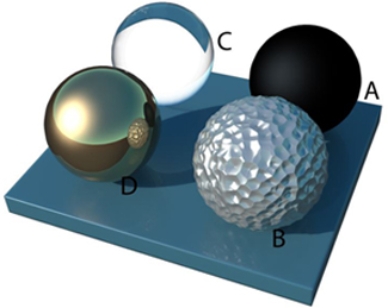
A) A
B) B
C) C
D) D
F) A) and C)
Correct Answer

verified
Correct Answer
verified
Multiple Choice
On equinox.
A) points north of the Arctic Circle receive 24 hrs of daylight
B) tilt is neither inclined toward or away from the sun
C) points south of the Antarctic receive 24 hrs of daylight
D) points north of the Arctic Circle and Antarctic Circle receive 24 hrs of darkness
F) A) and C)
Correct Answer

verified
Correct Answer
verified
Multiple Choice
On what day does the sun have its lowest zenith angle and sets/rises farthest north?
A) winter solstice
B) spring equinox
C) fall equinox
D) summer equinox
F) A) and D)
Correct Answer

verified
Correct Answer
verified
Multiple Choice
The surface temperatures of a metal plate, piece of wood, and piece of plastic were measured with an infrared thermometer.Air line above 20C.Which object's surface recorded the lowest temperature?
A) metal plate
B) wood
C) plastic
D) all measured the same
F) B) and D)
Correct Answer

verified
Correct Answer
verified
Multiple Choice
Base on the following climographs and insolation graphs. Letters represent a location where the climograph and insolation graph were recorded 

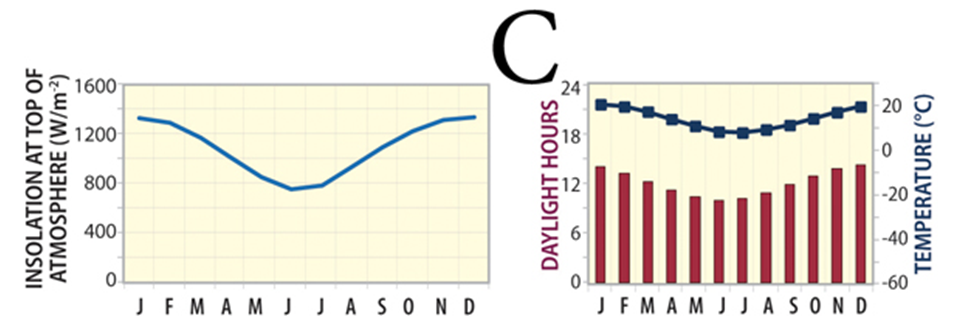
 -Which location has the longest period of continuous darkness?
-Which location has the longest period of continuous darkness?
A) A
B) B
C) C
D) D
F) A) and B)
Correct Answer

verified
Correct Answer
verified
Multiple Choice
What atmospheric layer is the home of weather, has the greatest density of gas molecules, and has a decrease in temperature with height? 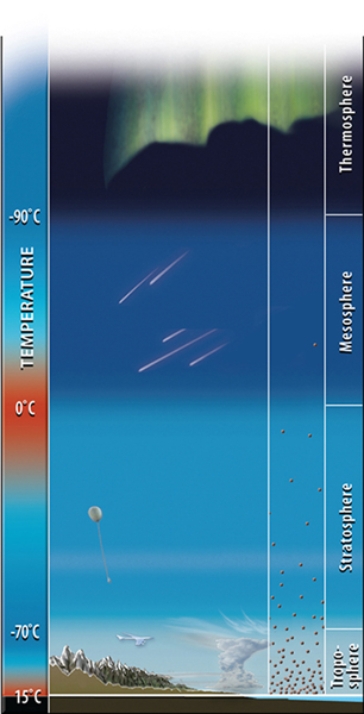
A) Thermosphere
B) Mesosphere
C) Stratosphere
D) Troposphere
F) A) and B)
Correct Answer

verified
Correct Answer
verified
Multiple Choice
Which of the following locations would experience a slight radiative energy deficit? 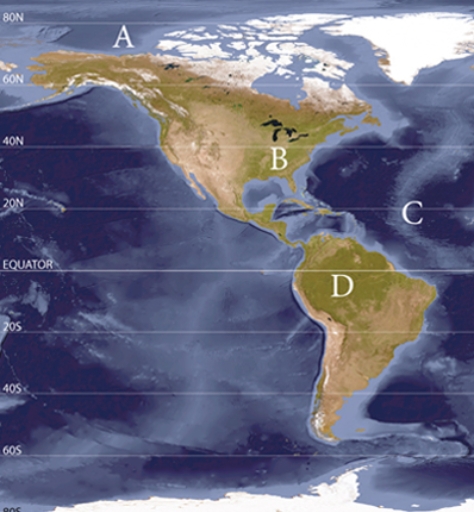
A) A
B) B
C) C
D) D
F) All of the above
Correct Answer

verified
Correct Answer
verified
Multiple Choice
Which of the following objects would be best at scattering light? 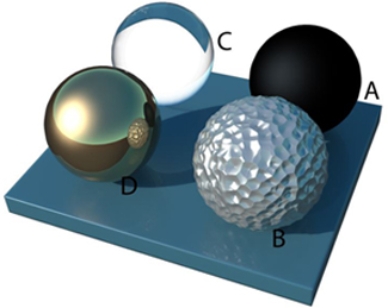
A) A
B) B
C) C
D) D
F) B) and D)
Correct Answer

verified
Correct Answer
verified
Multiple Choice
Base on the following climographs and insolation graphs. Letters represent a location where the climograph and insolation graph were recorded 


 -Which location is found in the mid-latitudes?
-Which location is found in the mid-latitudes?
A) A
B) B
C) C
D) D
F) A) and D)
Correct Answer

verified
Correct Answer
verified
Multiple Choice
The most important greenhouse gas for retaining a variety of outgoing longwave radiation is
A) CH4.
B) N2O.
C) H2O.
D) CO2.
F) B) and C)
Correct Answer

verified
Correct Answer
verified
Multiple Choice
All of the following involve the input of energy EXCEPT:
A) melting
B) evaporation
C) freezing
D) sublimation
F) A) and D)
Correct Answer

verified
Correct Answer
verified
Multiple Choice
Where is the least and greatest amount of outgoing longwave radiation (OLR) located? 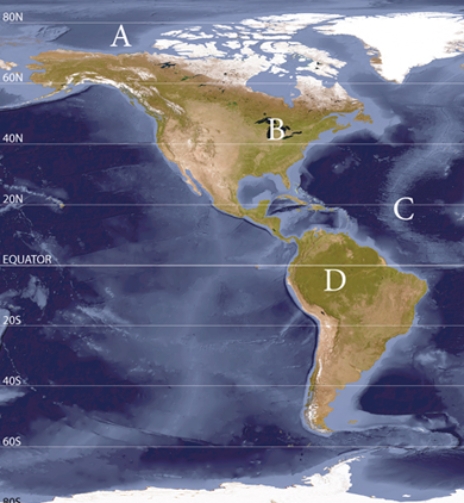
A) A & B
B) A & C
C) A & D
D) C & D
F) A) and B)
Correct Answer

verified
Correct Answer
verified
Multiple Choice
Oceans heat and cool more slowly than land because of
A) oceans' lack of transparency dampen temperature changes.
B) great amounts of latent heat available to directly warm ocean water.
C) oceans' high specific heat dampen temperature changes.
D) lack of mixing through the water column.
F) A) and D)
Correct Answer

verified
Correct Answer
verified
Multiple Choice
Which of the following processes is primarily responsible for the sky's blue color?
A) absorption
B) scattering
C) reflection
D) filtering
F) C) and D)
Correct Answer

verified
Correct Answer
verified
Showing 21 - 40 of 74
Related Exams